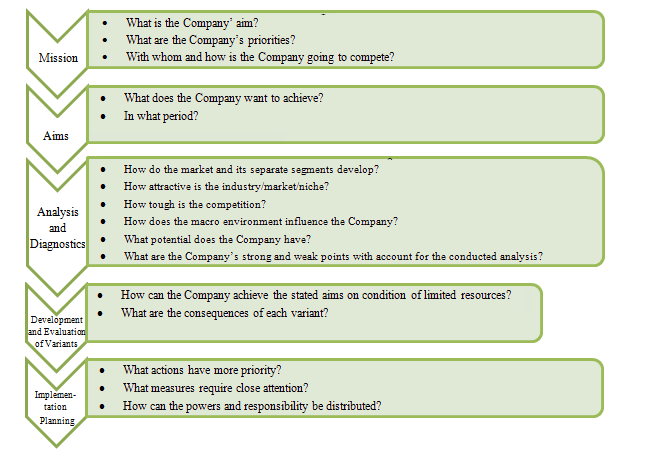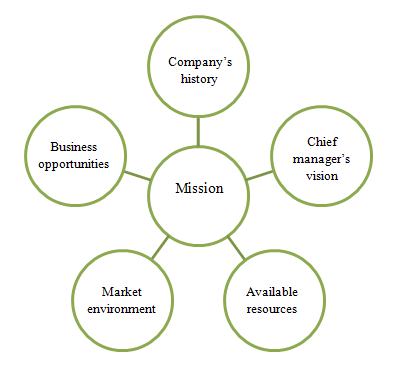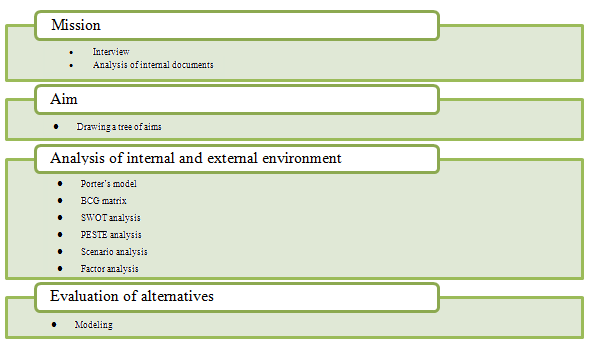Stages in Development of Company’s Strategy
04.06.2014
Constantly changing environment forces companies to have strategic planning for taking optimal, consistent solutions, leading to strengthening of their market positions.
A company’s long-term strategic tasks can be divided into four groups:
- growth of profit;
- reduction of costs;
- increasing of the market share;
- improvement of the social policy.
Strategic planning includes stating the aim and defining the way to achieve it. The Company’s developed strategy then predetermines decision-making on various levels. The strategy can be developed not only for the company, as a whole, but for separate directions of its activities and functional directions (for example, financial strategy) and separate subdivisions.
The strategy can be formed in several stages:
- on the first stage the company’s mission and aims are stated;
- then the external and internal environment are analyzed;
- alternatives are developed and evaluated;
- as a result, the strategy is chosen and its implementation is planned.
As a result of strategy development the Company gets answers to a number of key questions:
Figure 1. Stages in strategy development and key issues of each stage

The Company’s mission is the basic, static part of the strategy; it formulates the basic direction of the Company’s activities, giving to it individuality and differentiating it from other companies. The mission translates the Company’s values both to the environment and employees. While formulating it, the Company’s external environment, history of activities, resources and opportunities and its chief managers’ vision are taken into account.
Figure 2. Mission-defining parameters

Then, by means of decomposition, the Company’s aims are determined. In distinction to the mission, they are oriented at a limited period of time, suggest achieving established, quantifiable indices with the use of available resources.
The next stage is comprehensive evaluation of the Company’s internal and external environment, which will make it possible to obtain a complex view of the Company’s current position and its opportunities.
Then possible variants of the Company’s activities are developed, which will enable achieving the stated aims. Comparative evaluation of the suggested variants is conducted.
The final stage is determination of key tasks and ways of solving them within the framework of the chosen strategy, time scheduling of the Company’s activities, directed at achieving of the stated aims.
Figure 3. Strategic planning tools

The brief review of the company’s strategy development showed that it is a lengthy process, requiring extensive analytical work. In this connection strategy development is more often entrusted with a consulting company, which, having work experience and various tools, is capable of organizing this process in the most efficient way. But, on the whole, strategy consulting is oriented at development of solutions which can increase the company’s competitiveness on the market, and its activity is not limited to development of strategies.

